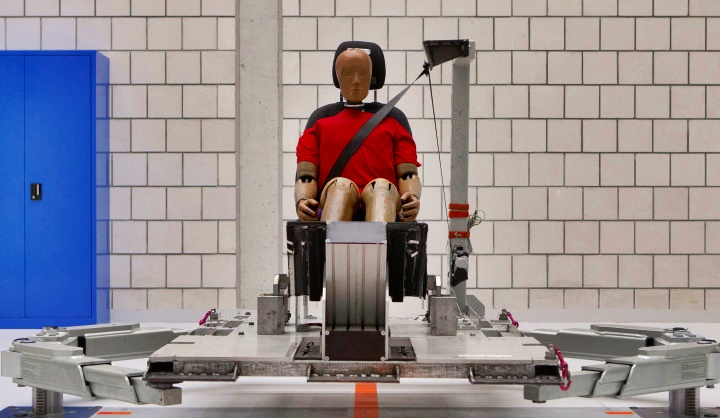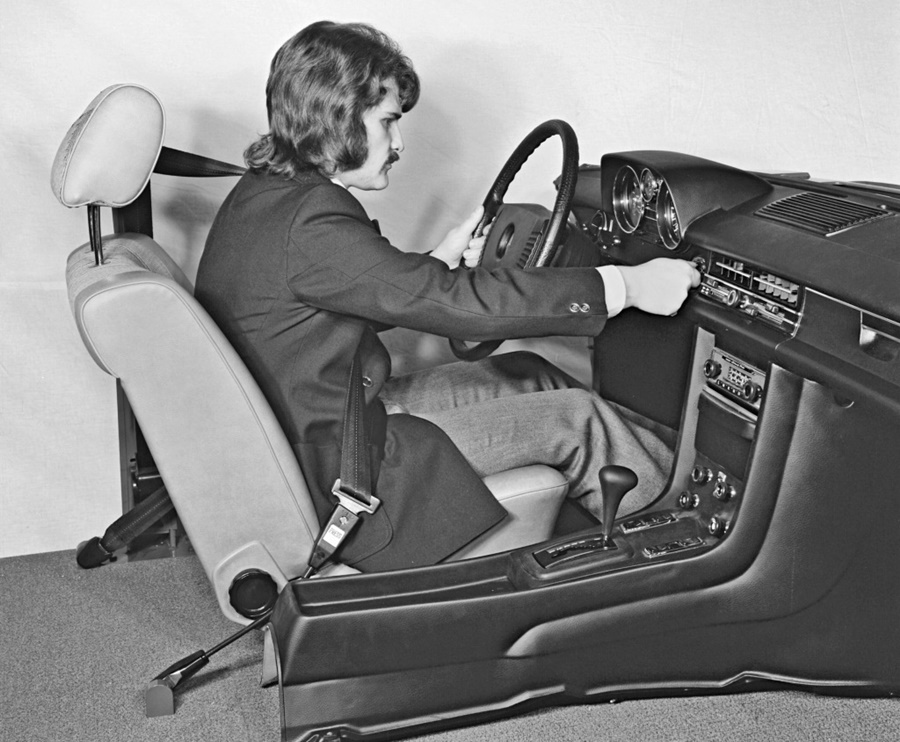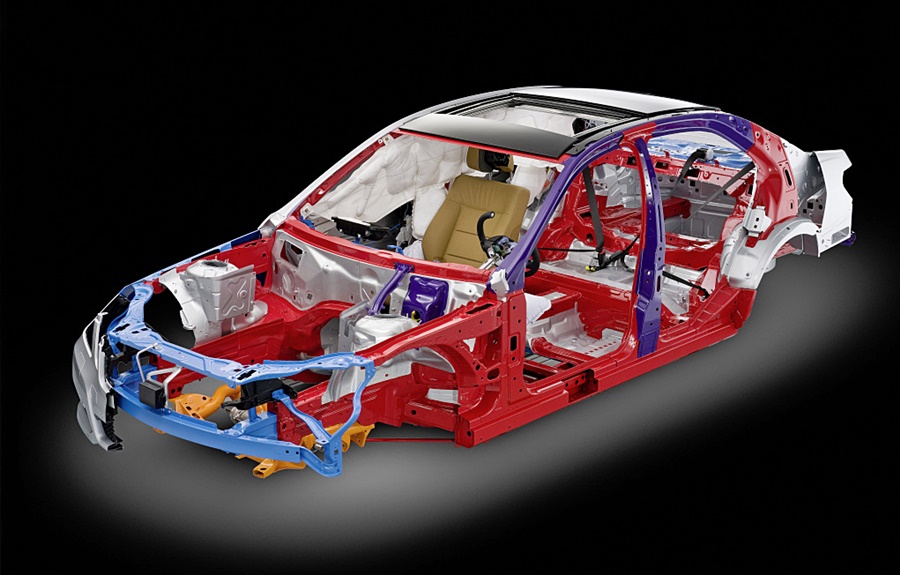It is well known that a Swedish engineer, Nils Ivar Bohlin, who joined Volvo from the aircraft industry developed the 3-point safety belt that is common in every car today. And, though patented, Volvo generously allowed everyone else to follow the same design without any charge. It was a ‘gift to the world’ as Volvo hoped such a move would get the seatbelt adopted widely and quickly. And it was, saving hundreds of thousands of lives worldwide. Bohlin’s invention appeared in the late 1950s and of course, Volvo led the way by installing it in its cars as standard.
An idea from aircraft
However, the seatbelt was around for some time before Bohlin’s invention. The idea came from aircraft and early automotive inventors considered it to provide a form of restraint in the event the driver was thrown forward. In France, for example, Gustave-Desire Leveau registered a concept in 1903, which was for a complex 4-point seatbelt for the driver as well as the passengers.
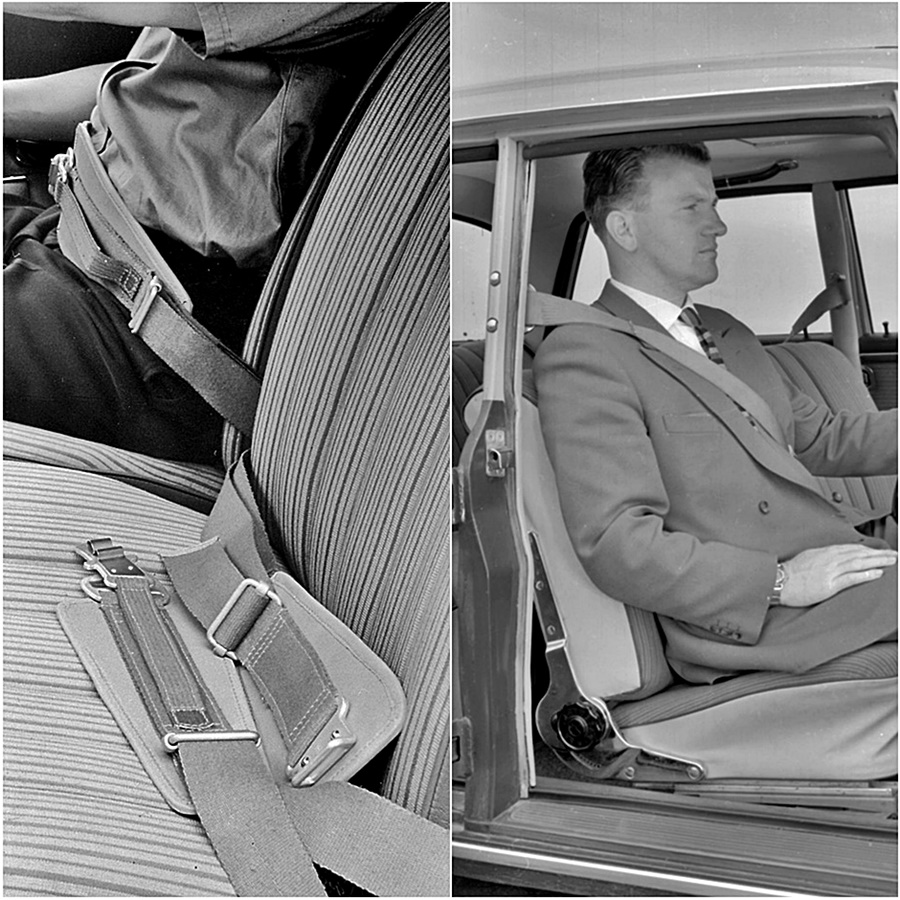
In Germany, Daimler Benz introduced a seatbelt in its Mercedes-Benz 300 SL Roadster (W 198) in 1957. The 2-point seatbelt, essentially like what was found in commercial aircraft, was an option in the open-top supersports car and the owner could have it installed on one or both seats.
Racing cars get seatbelts
From the 1950s onwards, an increasing number of cars racing in motorsport were also fitted with a seatbelt. It was a logical thing to do as speeds rose, and drivers could be flung out or hit the steering wheel in a crash. Over time, safety systems in racing cars have advanced and those used by drivers in Formula 1 cars are extremely sophisticated, providing head-and-neck support to reduce the dangerous acceleration of the head during a collision.

In 1958, Mercedes-Benz started to offer the 2-point seatbelt as optional equipment for the entire range of passenger cars with individual seats in the front. By the end of the same year, lap belts in the rear seats were also optionally available. Konrad Adenauer, the first Chancellor of the Federal Republic of Germany, was convinced by the system and his official car was equipped with a lap belt in the rear.
Enhanced operation for convenience
As mentioned earlier, Volvo made the 3-point seatbelt concept freely available to the industry and Mercedes-Benz adopted the idea in the 1960s. It combined the benefits of a lap belt and shoulder belt – just like Bohlin had described it in 1958 – and included a reeling mechanism, which was initially like a ‘luxury’ feature. Mercedes-Benz introduced the seatbelt with the automatic reeling mechanism as standard equipment in front seats in 1973, and later as standard equipment in rear seats.
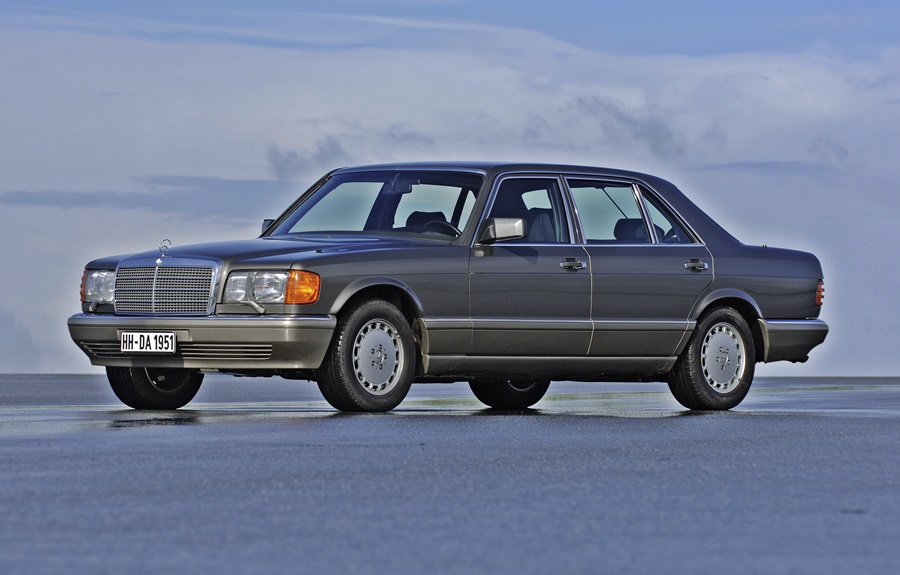
It is not just the way the seatbelt wraps around the body which is critical, but also how it is attached. The company delivered the R 107 model series SL (in 1971) with a seatbelt anchored to the bottom of the seat as standard equipment.
Seatbelt becomes compulsory
The value of seatbelts was very quickly noted by safety authorities, supported by accident research data. Manufacturers were asked to provide them as standard, at least for the front occupants, but not everyone wanted to use them. So laws were introduced to make usage compulsory, at least for the front occupants. Later on, the laws would be revised to include rear passengers as well.
Such laws initially met with plenty of resistance as they seemed to cause inconvenience and imagined discomfort. In Switzerland, for example, the protests were strong enough that the requirement was suspended some time and a referendum carried out before the law was accepted in 1981.
Mercedes-Benz continuously did R&D on all types of passive safety systems, which included seatbelts. As part of the Experimental Safety Vehicle (ESV) programme, automatically engaging seatbelts for the front seats were tested back in 1972 in the ESV 13 experimental safety vehicle. ESV 22, developed in 1973, served as a platform to test 3-point seatbelts featuring 3 seatbelt force-limiters and seatbelt tensioners as well as the driver airbag. By 1981, the driver airbag in conjunction with a seatbelt with a tensioner system was ready for introduction in the S-Class (W 126), providing the driver with even better protection during frontal collisions.
The quest to give better protection to the occupants of a motor vehicle continues, with various systems working together to provide the best protection when a car is involved in an accident. Advances are being made in the structure and new types of restraint systems are being developed although the primary one will still be the seatbelt.


